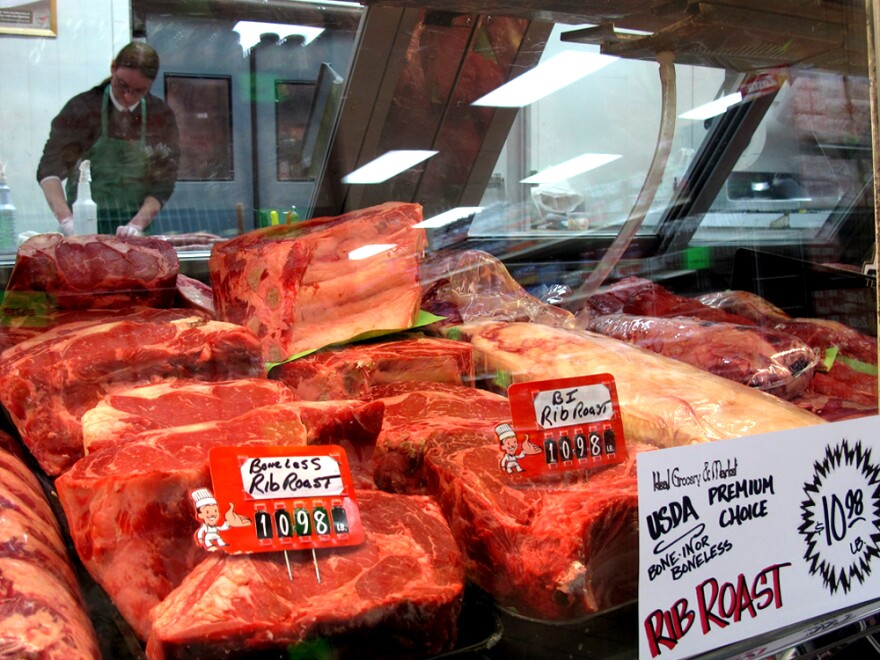For the first time in nearly 10 years, the nation鈥檚 beef herd may be poised for growth, which could mean relief from rising meat prices. But with the fewest cattle in the beef supply since the 1960s, slow growth won鈥檛 cut prices anytime soon.
Retail prices for choice cuts of beef are up 8 percent over the past year and 20 percent since 2008, . That means the steak you bought at $7 a pound a few years ago is up to almost $8.50. In many cases, that has shoppers switching to less expensive chicken or pork.
Like many grocers, Rob Toy, meat manager at in Lincoln, Neb., tries to avoid raising prices. Wearing a green apron and black tie, Toy fired up the meat saw to slice rib roasts, selling for $10.98 per pound, as shoppers browsed his meat case on a recent day. Like other cuts of beef, the price has been steadily creeping up.
鈥淲e could change prices every week,鈥� Toy said. 鈥淵ou kind of watch for trends and we make adjustments as we need to. Most of the time we try to absorb to keep the price to sell.鈥�

To get at the cause of ballooning beef prices, you have to go to the source: the beef feedlots that raise the vast majority of the cattle we eat. Craig Uden, co-owner of near Cozad, Neb., calls 2013 the toughest year of his career.
Standing in a gravel alley between long concrete feedbunks, Uden said he was glad to have the recent drought behind him, but it carries a long shadow. Dried up pastures and a spike in corn and hay prices pushed many ranchers to thin their herds.
鈥淵ou know the herd鈥檚 declined about 1.6 million in the last two or three years,鈥� Uden said. 鈥淲e went from basically 31-32 million cows a few years ago to 29 million beef cows.鈥�
Now it鈥檚 the . The result for Uden is some of the highest prices he has ever paid to buy calves from nearby ranchers for his 40,000-head feedlot.
鈥淲e definitely need to keep seeing some moisture come along so we can get back to whatever we think normal is,鈥� Uden said.
What is normal seems to be that cattle numbers keep dropping. The drought brought a steep decline. But downsizing has been the general trend since the nation鈥檚 beef herd peaked at 45 million head in 1975. Iowa State University livestock economist Lee Schulz says that鈥檚 more beef cattle than we need in 2014.
鈥淲e don鈥檛 really need the size of the herd that we had back in the 1970s because we鈥檙e just able to be that much more efficient in bringing beef to the market,鈥� Schulz said.
Feedlots are putting on more pounds, more meat, per animal. At the same time, many farmers have gotten rid of cattle to convert pasture land for raising crops.
When the USDA it鈥檚 expected to show the herd shrank again in 2013. But Kate Brooks, a livestock specialist at the University of Nebraska Lincoln says there are signs pointing toward growth in 2014.

鈥淚mproving pasture conditions, input prices, corn prices have continued to fall, hay prices have started to become better,鈥� Brooks said. 鈥淲e do see some potential within the cow/calf herd maybe moving out of that liquidation stage and actually starting to see some increases in our cow herd size.鈥�
If the beef herd does begin to grow as expected, prices will come back down. But Brooks says it will take at least two years. And she says because ranchers will hold cows back to reproduce, beef prices could go even higher before they begin to decline late 2015 or early in 2016.








